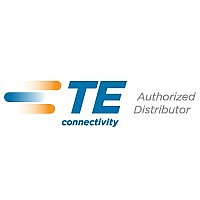327913-000 Tyco Electronics, 327913-000 Datasheet - Page 23

327913-000
Manufacturer Part Number
327913-000
Description
Connector Accessories Hexa Shield Adapter Aluminum Alloy Olive Drab
Manufacturer
Tyco Electronics
Type
Hexa Shield Adapterr
Datasheet
1.163665N003.pdf
(637 pages)
- Current page: 23 of 637
- Download datasheet (13Mb)
Catalog 1654025
Revised 12-04
www.tycoelectronics.com
Dimensions are in millimeters
and inches unless otherwise
specified. Values in brackets
are U.S. equivalents.
Electrical Interconnection System Design
Protection of Harness Components
A salt deposit can be seen beneath
the end of this 18-AWG, 19-strand
wire. The other end of the wire has
been immersed in salt water for 24
hours.
Harness components are
vulnerable to corrosion,
stress, strain, and electro-
magnetic interference
(EMI).
Corrosion
Humidity, moisture, salt, and
corrosive fluids can corrode
conductors and contacts.
What is worse, the corrosion
can take place well beyond
the point of penetration
because of the small tube-
like voids—capillaries—
between the individual
strands of copper that make
up the conductor. Called
“capillary action,” the pene-
tration of a fluid can “wick”
many feet in a relatively
short time (see photo
above), depending on the
specific characteristics of
the affected wire. As the
copper in the conductor is
depleted by corrosion, the
conductor can no longer
sustain mechanical or elec-
trical loads and the metal
will fail. Mechanical failure
can thus occur anywhere in
the wiring system.
Even before mechanical
failure occurs, electrical
Dimensions are shown for
reference purposes only.
Specifications subject
to change.
performance can be
adversely affected by the
presence of nonconductive
by-products from galvanic
or aqueous corrosion.
Moisture within a connector
body may cause an imped-
ance mismatch, increase
noise in a signal circuit, or
modify the waveform. Even
small amounts of corrosion
or other contaminants can
have a significant impact on
contact surfaces and the
efficiency with which signals
flow through them.
If a chemical solution
contacting the electrical
connection is itself conduc-
tive it can cause a short
circuit between conductors.
Pure water, not itself a
conductor, can also
facilitate a short circuit by
providing a medium into
which conductive salts can
dissolve. These salts may
be the by-products of
corrosion or the result of
earlier contamination.
High humidity and
temperature cycling in
some situations cause
condensation, the accumu-
lation of which can also
result in a short circuit.
Depending on circum-
stances, the resulting short
circuit may be intermittent,
significantly complicating
the process of identifying
the underlying cause.
To prevent corrosion,
sealing may have to meet
the performance require-
ments of applicable military
specifications or the
International Protection
(IP) Code.
Stress and Strain
Wires that are attached to
the connector pins need
help to withstand stresses
and strain from the cable,
which could break the wires
from the pins. It is almost
always necessary to pre-
vent strain from occurring in
USA: 1-800-522-6752
Canada: 1-905-470-4425
Mexico: 01-800-733-8926
C. America: 52-55-5-729-0425
a weak spot, such as where
the wire is attached to the
contact. This is called strain
relief and can be provided
in a variety of ways, from
mechanical devices, such
as adapters, to molded
boots and heat-shrinkable
tubings.
EMI (Electromagnetic
Interference)
EMI is similar to the noise
heard on an AM radio when
the radio is close to high-
voltage lines. EMI causes
the wire or cable to act like
an antenna and pick up
electrical signals, which
interfere with the signals
on the wire and can cause
malfunctions in sensitive
electronic circuits.
Wiring systems are suscep-
tible to two types of EMI:
I
I
To reduce susceptibility to
radiated emissions from the
cable or from external
sources, the harness must
be grounded, shielded,
and/or filtered, depending
on the sensitivity of the
equipment and the strength
and frequency of the EMI.
Radiated emissions (the
electromagnetic energy a
wiring system radiates to
its surrounding environ-
ment), such as the EMI a
high-voltage line radiates
to its surroundings.
(There are regulations on
the amount of radiated
energy a circuit is allowed
to produce.)
External radiated
emissions (the electro-
magnetic energy in the
environment), such as the
EMI an AM radio picks up
from a high-voltage line,
causing distortions in the
conducted signal.
Conducted EMI is noise
carried by the cable into
the receiving circuit and
needs to be filtered.
South America: 55-11-3611-1514
Japan: 81-44-900-5102
Singapore: 65-4866-151
UK: 44-1793-528171
2-5
2
Related parts for 327913-000
Image
Part Number
Description
Manufacturer
Datasheet
Request
R

Part Number:
Description:
Circular DIN Connectors MALE CABLE CONNECTOR 3 WAY
Manufacturer:
Amphenol

Part Number:
Description:
Circular DIN Connectors MALE CABLE CONNECTOR 3 WAY
Manufacturer:
Amphenol

Part Number:
Description:
Circular DIN Connectors MALE CABLE CONNECTOR 3 WAY
Manufacturer:
Amphenol

Part Number:
Description:
Circular DIN Connectors MALE CABLE CONNECTOR 3 WAY
Manufacturer:
Amphenol

Part Number:
Description:
Battery Interconnection System for Portable Electronics; BU CONN FS6 8POS DIP TYPE ASSY ( AMP )
Manufacturer:
Tyco Electronics

Part Number:
Description:
Manufacturer:
Tyco Electronics
Datasheet:

Part Number:
Description:
Manufacturer:
Tyco Electronics
Datasheet:










